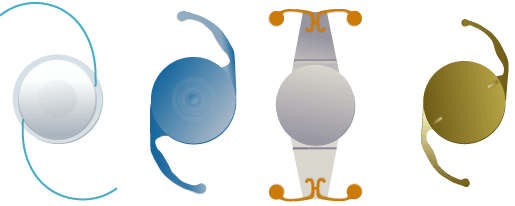The latest technology in cataract surgery is the CATALYS® Precision Laser System. It can replace the use of traditional handheld blades for cataract surgery.
The CATALYS® Precision Laser System produces better outcomes from cataract surgery. It also gives you a shorter procedure and recovery time.
This breakthrough technology gives your surgeon real-time, three-dimensional visualization of your eye. It results in a customized treatment plan for each of your eyes.
Eye Specialty Group is proud to offer such an advanced procedure. We are the first in the area to bring patients the enhanced outcomes of this laser cataract surgery platform.
The CATALYS® Precision Laser System is the world’s most advanced laser cataract surgery platform. It is the system of choice for laser cataract surgery at Eye Specialty Group.

The system uses optical coherence tomography (OCT) to map your eye. OCT takes cross-section images of your eye to create three-dimensional maps of it. These maps guide your surgeon throughout the procedure.
Cataracts don’t grow on top of your natural lens. They grow inside it. The only way to get rid of them is to remove your lens.
Cataract surgery removes and replaces your natural lenses with an intraocular lens or IOL. The IOL you choose before the procedure handles focusing light on your retina.
Before the procedure begins, your surgeon numbs your eyes with anesthetic eye drops. When they take effect, the procedure can begin.
Your surgeon starts by creating a small incision in your cornea. This incision allows them to access the lens behind it.
When they can reach the lens, they break it into tiny bits, making it easier to remove. They take it out with light suction, replace it with your IOL, and the procedure is over.
The incision in your cornea heals on its own. Over the next few days, you should begin to see dramatic improvements in your vision.
Laser cataract surgery follows the same process as standard cataract surgery. But, it is more precise and quicker because it uses lasers.
Before laser cataract surgery begins, your surgeon uses a laser to take the images of your eye.
These images go into a computer program, which creates a three-dimensional map of your eye. This map then guides your surgeon through the procedure.
It informs them on the best place to make the corneal incision and aids in placing the IOL in your eye. A different laser breaks your lens into smaller pieces. Using a laser to do this reduces the damage done inside your eye.
In traditional cataract surgery, ultrasound frequencies break your lens. While this is effective, it creates more inflammation and a longer recovery time than a laser.
Using a laser for cataract surgery makes the procedure faster and more precise. The precision that lasers provide has two main benefits.
The first is that your recovery should be faster and easier. The accuracy of the lasers limits tissue damage.
Minor damage reduces inflammation and eye trauma. A reduction in trauma and inflammation means your recovery is faster and simpler.
Enhanced visual outcomes are the second benefit of laser cataract surgery. Lasers create more accurate incisions, gentler lens removal, and more exact IOL placement.
The exactness of these steps creates enhanced visual outcomes over traditional cataract surgery. That means less chance of needing glasses and better visual acuity afterward.
Would you like to have laser cataract surgery when it’s time to take your cataracts out? Schedule an appointment at Eye Specialty Group in Memphis, TN, to see if you qualify for this enhanced procedure. Call 901-685-2200
With advancements in technology, there are several ways to renew your vision and regain control of your life. During cataract surgery, your natural lens is replaced by an artificial intraocular lens or IOL.
Having cataract surgery removes your cataracts and reduces your dependency on glasses and contacts. Here at Eye Specialty Group, our practice offers cataract surgery patients solutions to see better and regain control of their lives!
With age, proteins in the lens can become cloudy, making it harder to see. This is known as a cataract, and the cloudy lens is surgically removed and replaced with an intraocular lens (IOL). An IOL is an artificial lens implanted in the eye during cataract surgery.
There are many kinds of IOLs available. What IOL is suitable for you depends on several factors, including your lifestyle and your surgeon’s recommendation.

1000 Windover Rd. Suite C
Jonesboro, AR 72401
Hours:
M-F: 7:30am - 5pm
1458 W Poplar, Suite 101
Collierville, TN 38017
Hours:
M-F: 7:30am - 5pm
7600 Airways Blvd. Suite F
Southaven, MS 38671
Hours:
M-F: 7:30am - 5pm